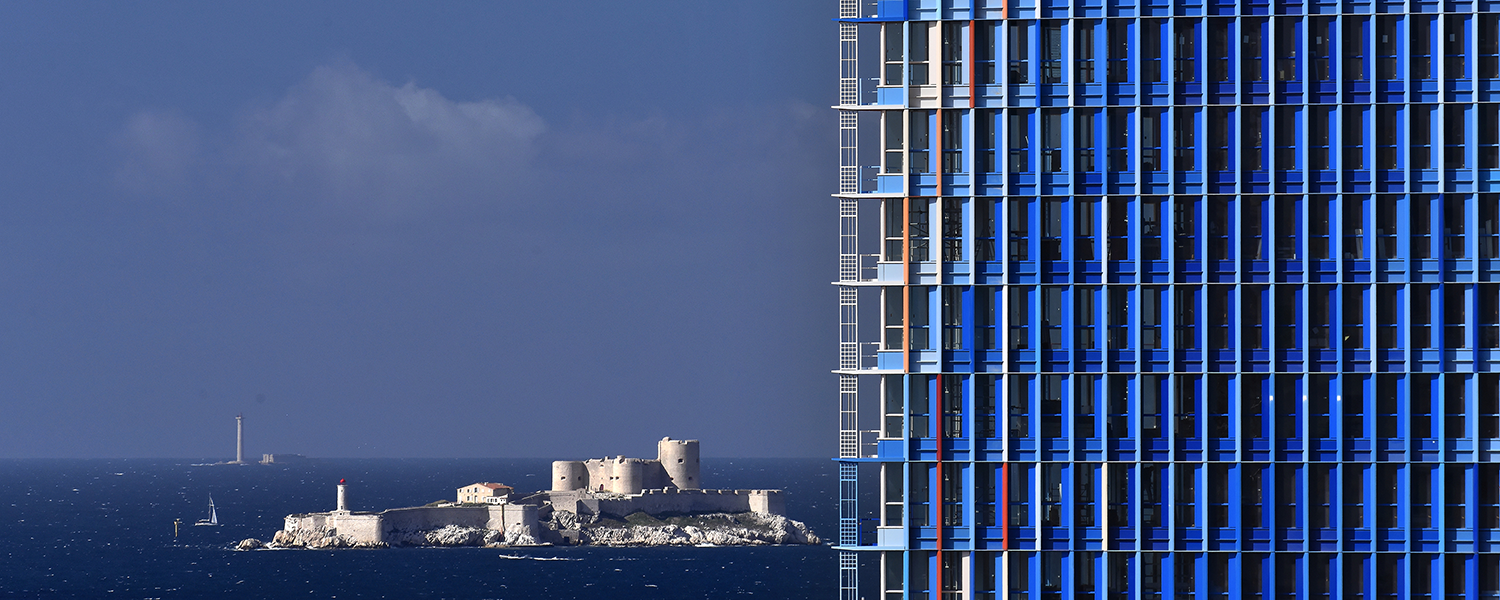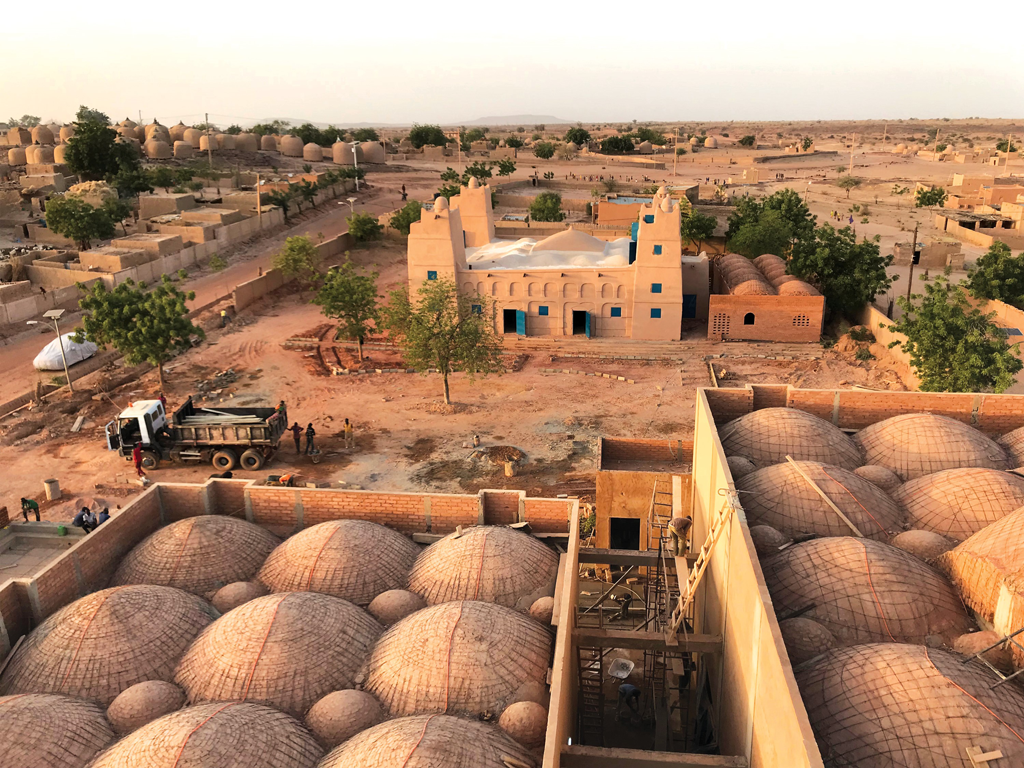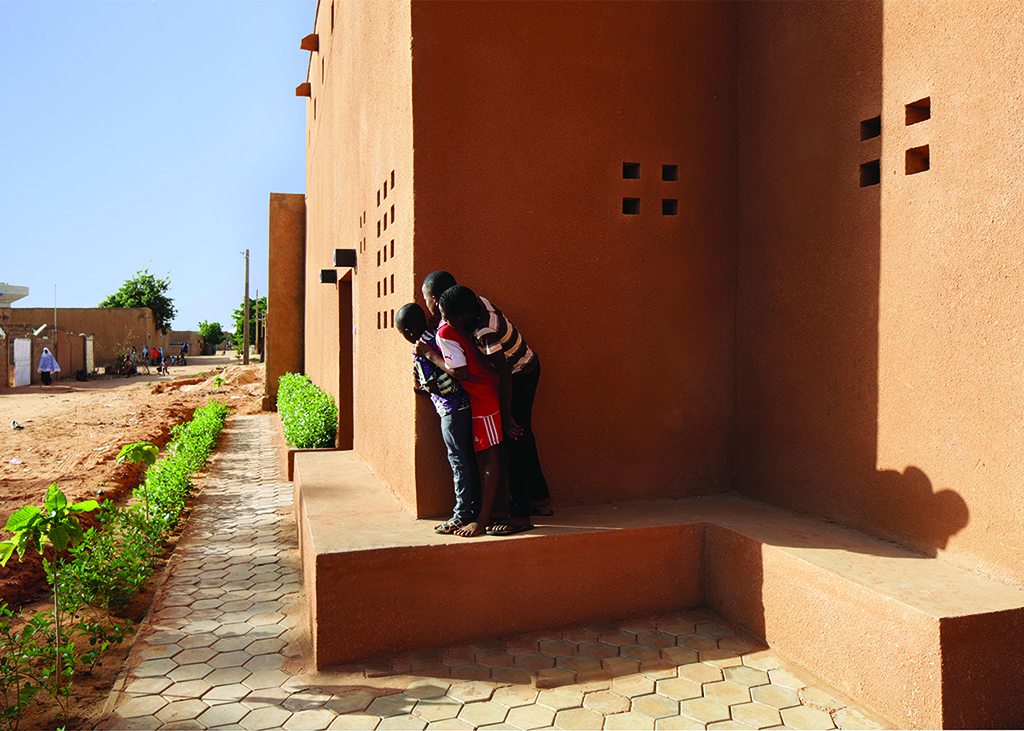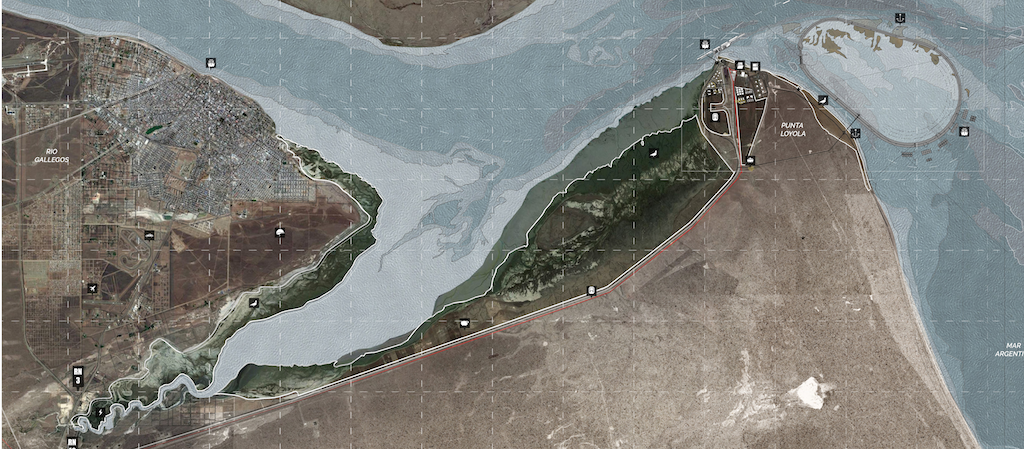
Tidal energy landscape, Argentina © Courtesy LafargeHolcim Foundation for Sustainable Construction
Water and the city, through the prism of LafargeHolcim Awards
Port areas reconversion, naval heritage to be promoted, integration of maritime transport within urban dynamics: in its last issue devoted to port architecture, AA recalled the importance of relationships between the city and its water points.
An essential issue that the 5th LafargeHolcim Awards cycle’s winners have obviously taken into account. The candidates’ proposals are far from utopian as some give a new perspective on the connections between water and cities around the world. Here’s a review of four winning projects that have perfectly integrated the challenges of sustainability while offering appropriate answers to urban & social issues.
Stefano Romagnoli, Juan Cruz Serafini and Tomás Pont Apóstolo: Territorial Figure
Tidal energy landscape, Punta Loyola, Argentina
Next Generation first prize for Latin America in 2017
Addressing the potential ramifications of human-induced climate change on the natural environment, the authors propose an infrastructure for the use of tidal energy in the Río Gallegos estuary at Punta Loyola in Argentina.
Based on a local, regional and international study of Patagonia, the architects recognised ecological, topographic, migratory and natural orders. Hence, an isolated tidal lagoon is designed based on four categories: environment, water production, energy and tourism. From them, the user appropriates this water infrastructure, generating multiple tensions in permanent relationship with the landscape. The proposal responds to the need of a person, the development of a country and the health of the planet.
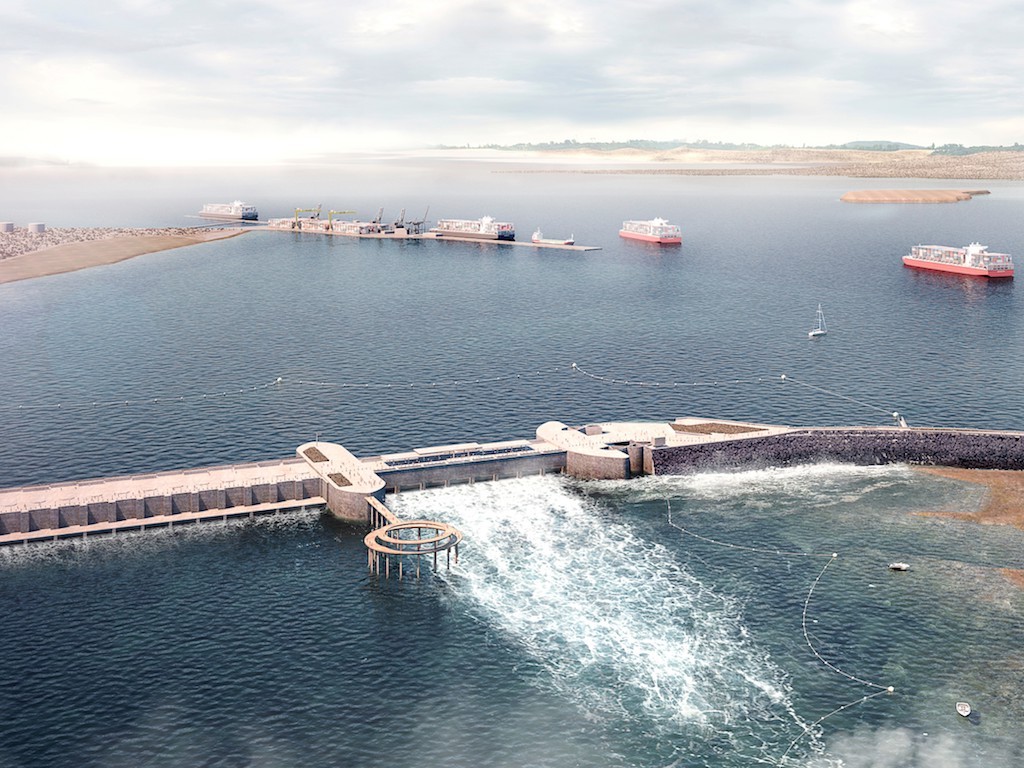
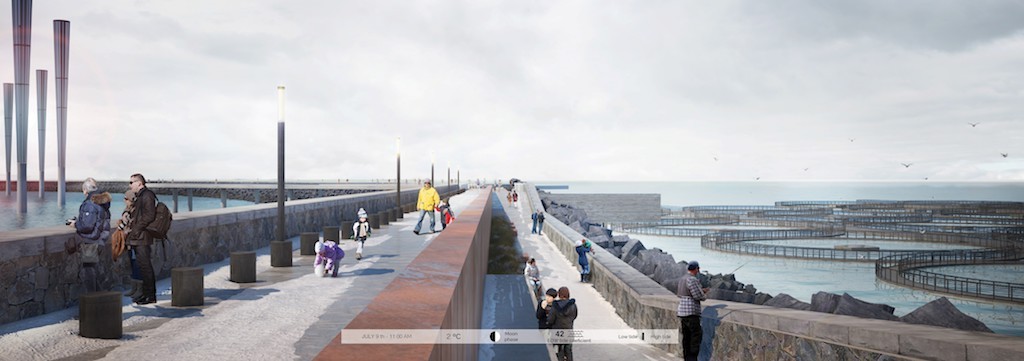
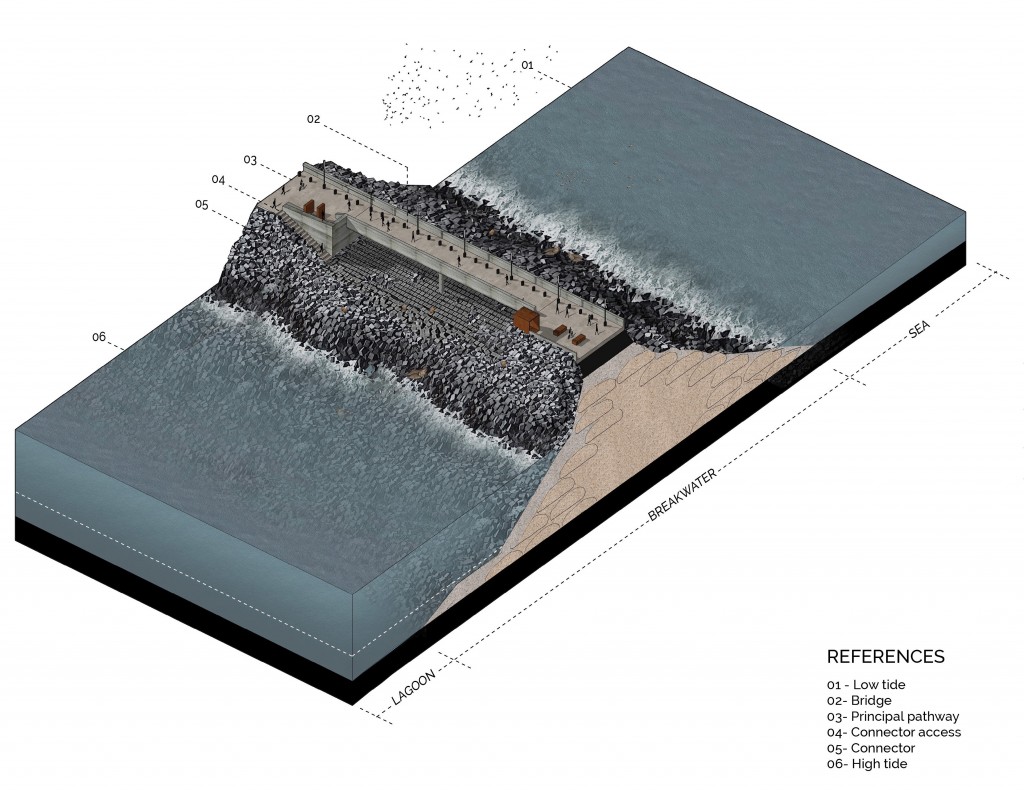

—
Boris Lefevre: Clearwater Revival
Public baths and sewage treatment plant in Cerro de Pasco, Peru.
Second prize, Next Generation Awards Lab 2018
Located in a contaminated body of water —formerly known as “the lake to drink”—in the city of Cerro de Pasco in Peru, the new construction offers the unpretentious need to inhabitants for washing themselves in clean, potable water. Combining a sewage treatment plant with baths and 400 shower cabins, the design is treated as a well-crafted and beautifully designed monument in the lake, albeit one satisfying basic functions desperately needed by the city population. The project’s ambition to provide both clean water as well as a place to bathe is a response to the wasteful use of an existing resource by ruthless industrial exploitation. Though poetic in its architectural expression, the design’s political message cannot be overlooked, namely, to treat both the natural environment and humans with greatest respect.
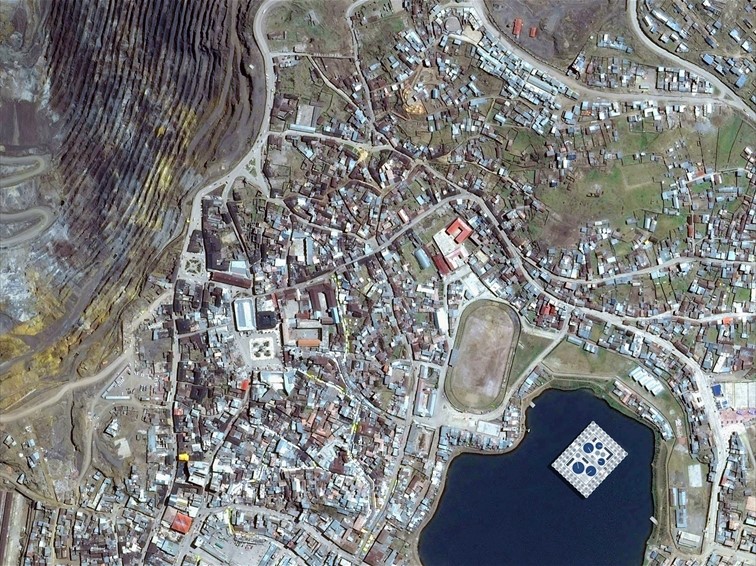
At the western part of the city, an open pit mine is devouring the city from the inside. The project symbolically stands against it.
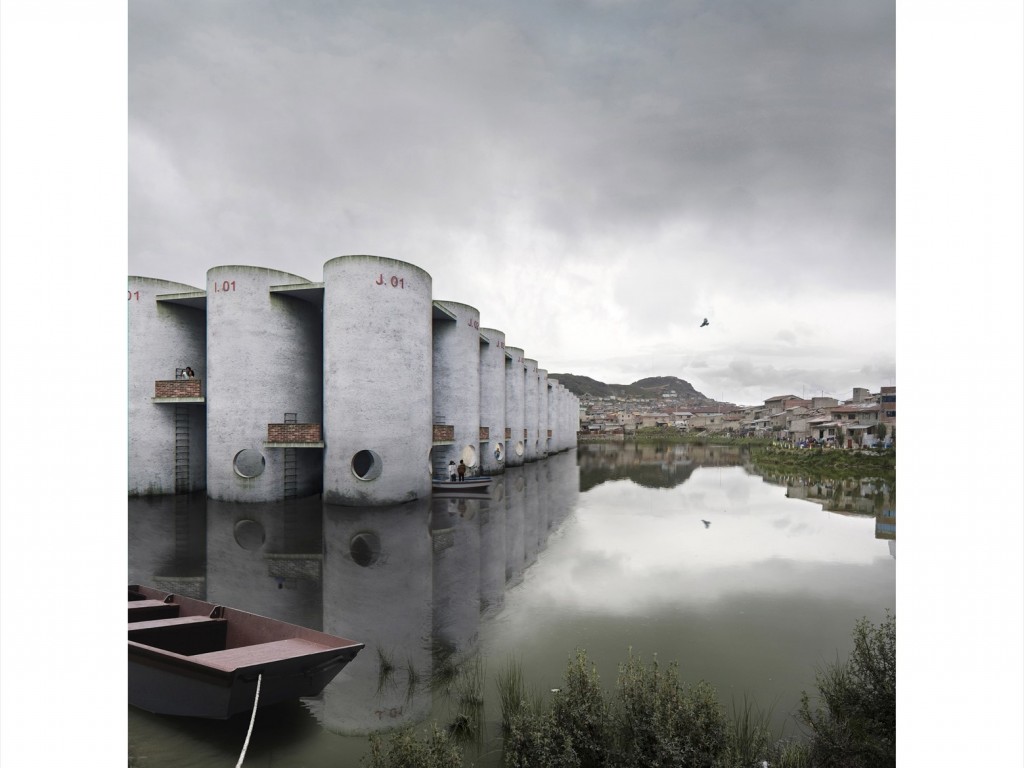
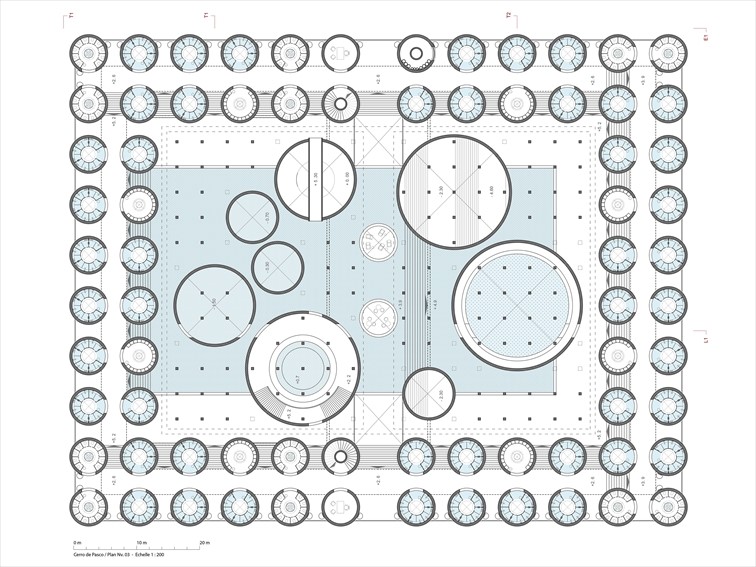
Bath spaces plan, on the first level.
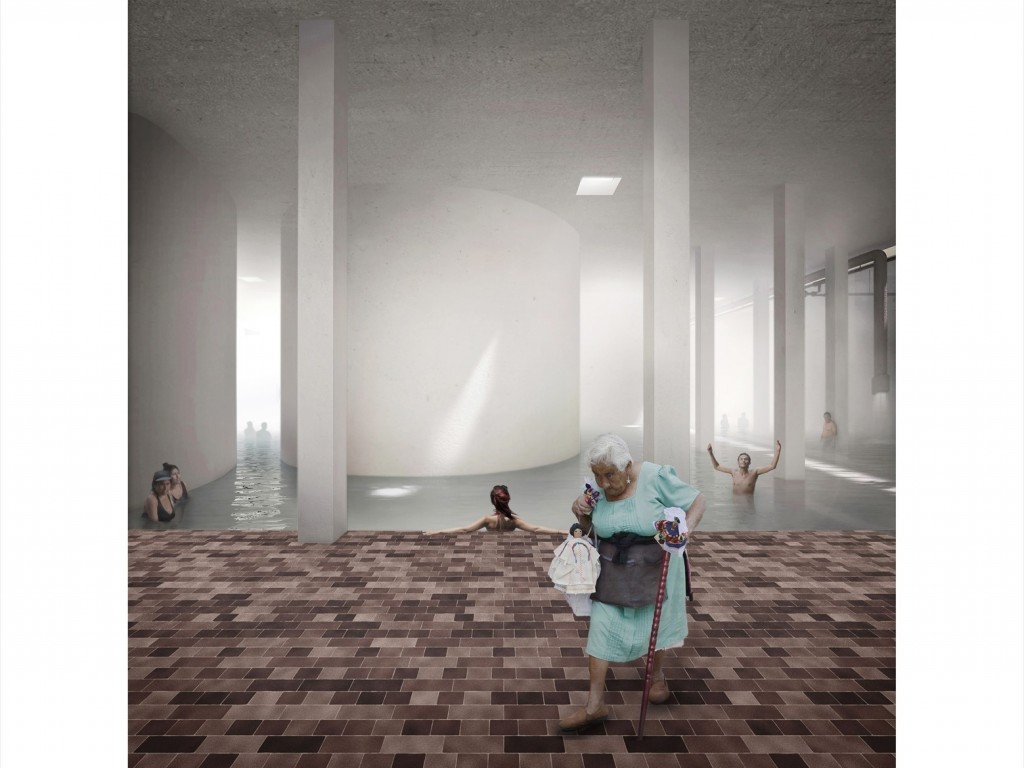
The central space, which contains different types of baths, is shaped by the curves of the treatment tanks.
—
TETRA architecten: Logistic Framework
Clever waste management in Brussels, Belgium
Ex-aequo winners of the Gold LafargeHolcim Awards 2017 for Europe
With their project, TETRA architecten in Brussels plan to integrate the needs of a waste management company with the rapidly developing canal district: Within the (infra-)structure, space is made available for public uses such as green areas. The carefully balanced building allows future transformations and leaves development options open – a particularly clever interpretation of the term “sustainability.”
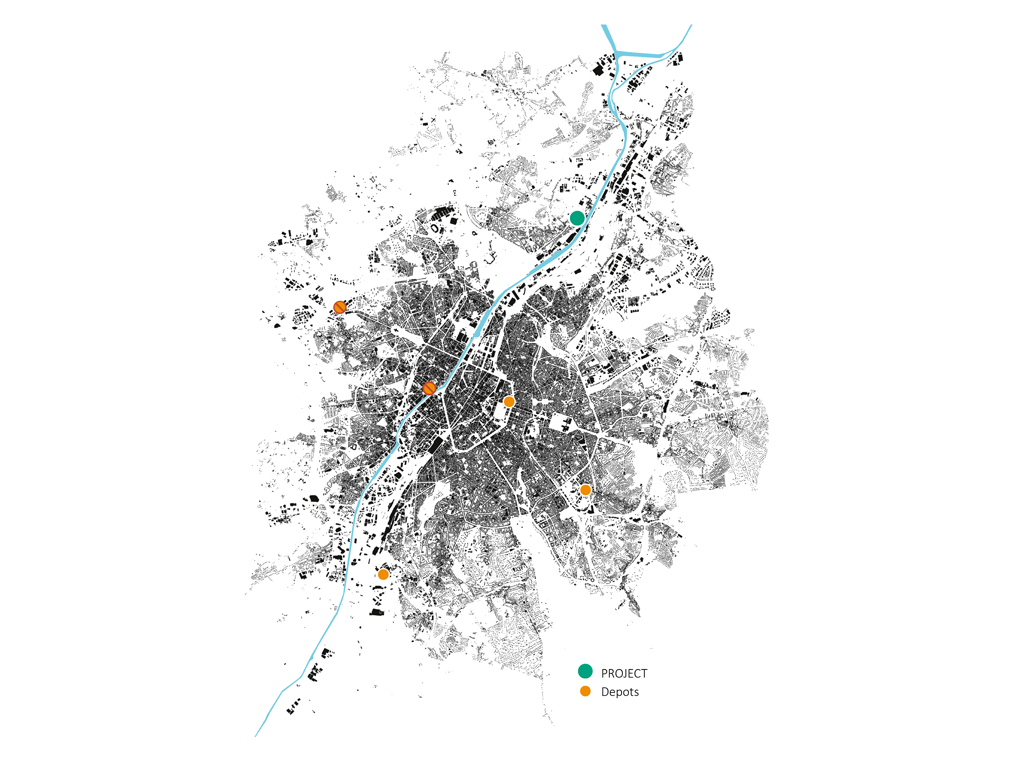
Situation of the project in the northern segment of the canal area.
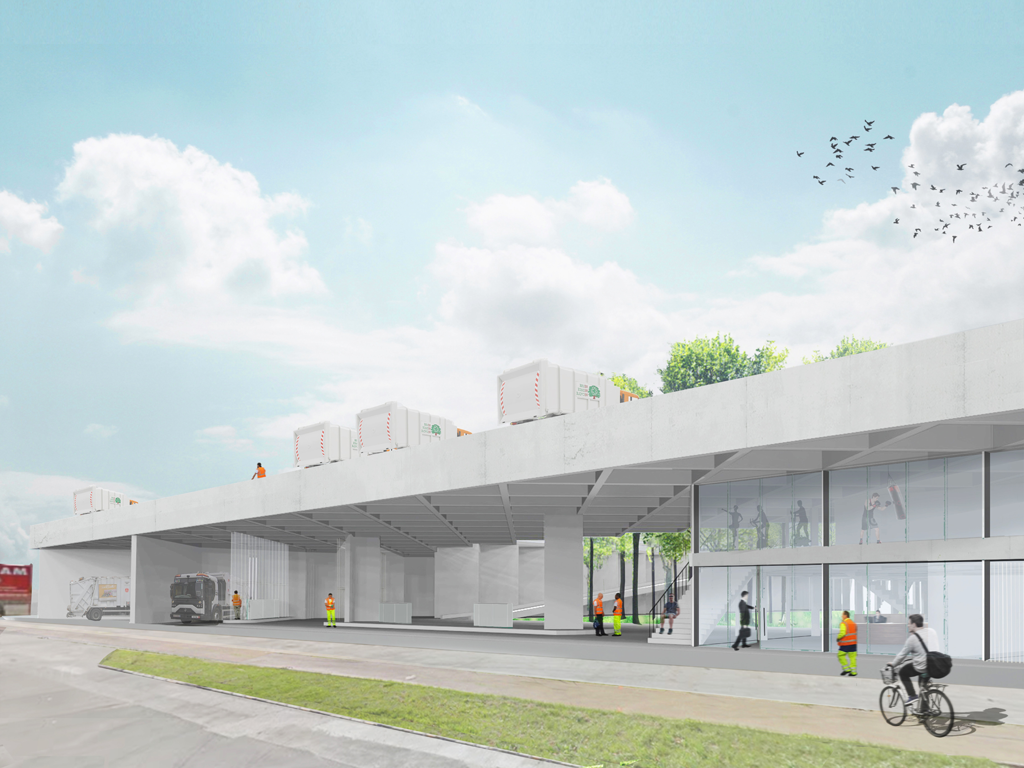
Washing zone, vehicle control, entrances and fitness under the canopy create a dynamic zone.
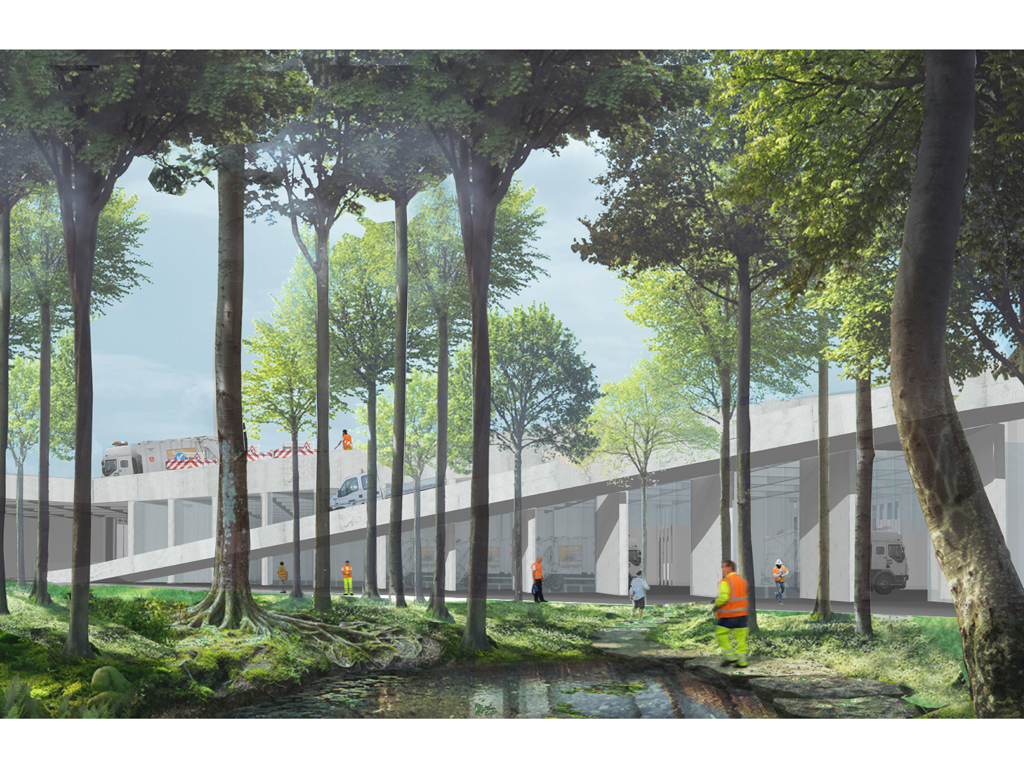
View from the forested area towards the vehicle ramp and the parking places.
—
BC architects and studies: Mix-City
Integration of a concrete plant in Brussels, Belgium
Ex-aequo winners of the Gold LafargeHolcim Awards 2017 for Europe
The complimentary project by the team of BC architects and studies in Brussels proposes appropriate measures to integrate an existing concrete plant into the burgeoning urban context – and thereby prevent the loss of a significant piece of the city’s industrial base. Here too, permeability is a central aspect.
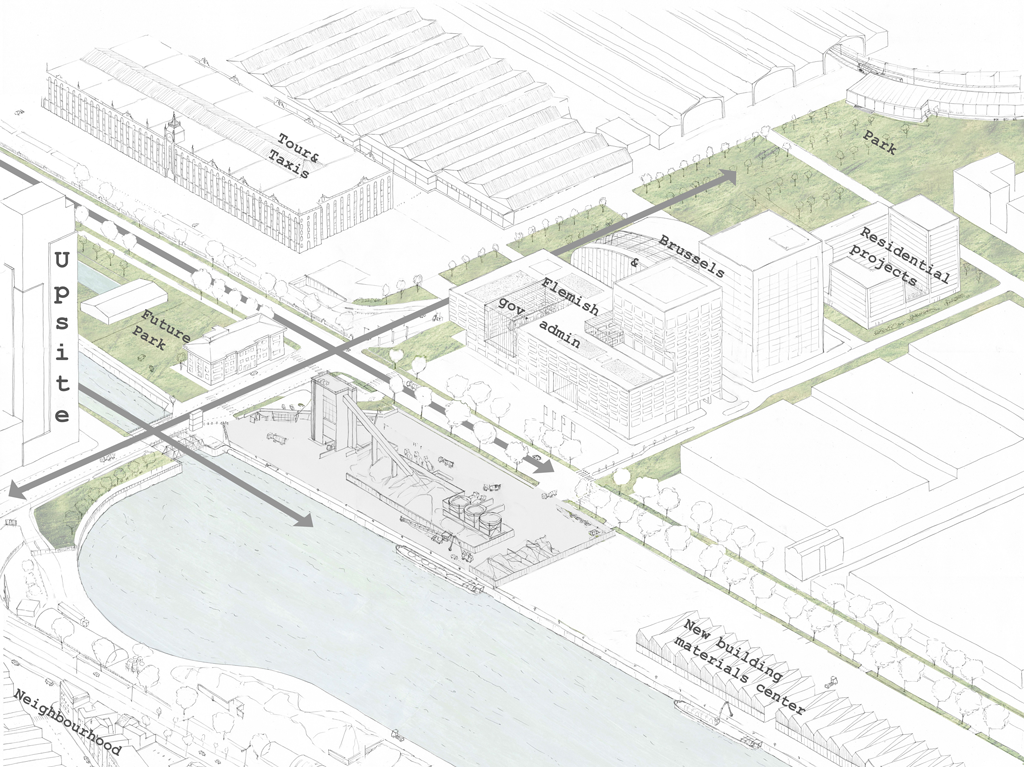
Drawing of the existing situation. The Upsite tower, the offices for Brussels and Flemish administration, Tour & Taxis, the current and future parks, etc… this is a diverse and vibrant zone in full development. The Inter-Beton site is on the intersection of two different axes, and can become a landmark, partly industry, partly accessible to all, contributing to a truly mixed Canal Zone for all to enjoy and use.
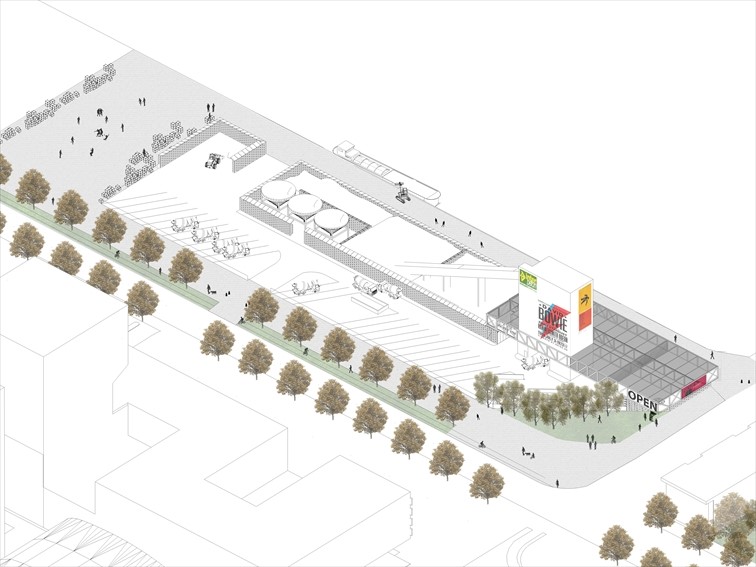
Axonometry showing a clean site organisation and a landmark tower with canopy.
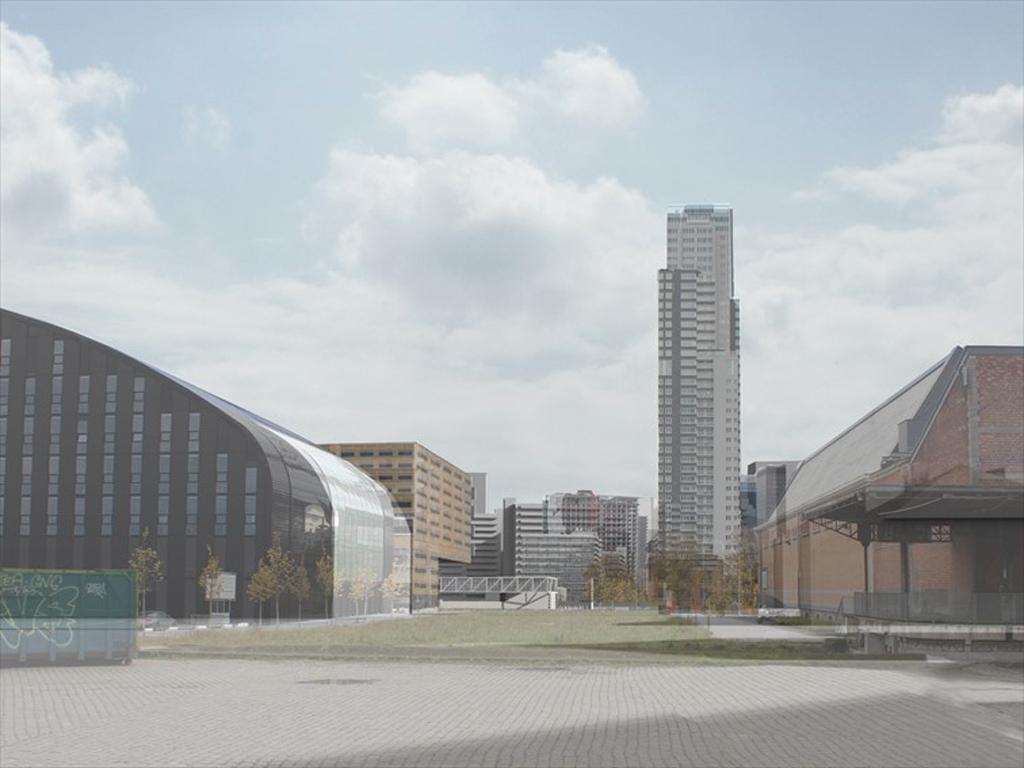
View from the Park of Tour & Taxis: the canopy protrudes and is visible at the end of the axis.
—
To know more about the winning projects of the 5th cycle of the LafargeHolcim Awards, visit the Foundation’s website.

